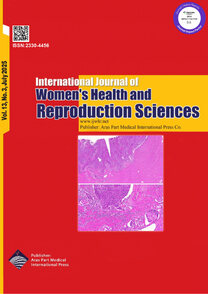| Original Article | |
| Bayesian Structural Equation Modeling of Quality of Life Mediated by Difficulty in Daily Life in Perioperative Breast Cancer Patients | |
| Aki Watanabe1, Takayuki Kawaguchi2, Misuzu Kaneko3, Kuninori Sano4, Ayumi Nobematsu5, Takeshi Kobayashi6 | |
| 1Department of Rehabilitation, Faculty of Health and Social Services, Kanagawa University of Human Services, Yokosuka, Kanagawa, Japan 2Department of Community Mental Health and Law, National Institute of Mental Health, National Center of Neurology and Psychiatry, Kodaira, Tokyo, Japan 3Department of Rehabilitation, Kanto Rosai Hospital, Kawasaki, Kanagawa, Japan 4Department of Rehabilitation, Yokohama City University Medical Center, Yokohama, Kanagawa, Japan 5Department of Rehabilitation, School of Allied Health Sciences, Kitasato University, Sagamihara City, Kanagawa, Japan 6Department of Rehabilitation, Faculty of Health Sciences, Nihon Institute of Medical Science University, Iruma, Saitama, Japan |
|
|
IJWHR 2025; 13: 127-135 DOI: 10.15296/ijwhr.2025.8716 Viewed : 326 times Downloaded : 395 times. Keywords : Breast cancer, Structural equation modeling, Quality of life |
|
| Full Text(PDF) | Related Articles | |
| Abstract | |
Objectives: This study was aimed to clarify the structural relationship of quality of life (QOL) in perioperative breast cancer patients. Materials and Methods: Participants in this prospective case-series study were inpatients who underwent surgery for initial breast cancer between October 2020 and September 2021. Five assessments were used at discharge; Functional Assessment of Cancer Therapy (FACT-B) for QOL, Hospital Anxiety and Depression Scale (HADS) for anxiety and depression, sense of coherence (SOC)-13, World Health Organization Disability Assessment Schedule 2.0 (WHODAS 2.0) for difficulty in daily life, and Classification and Assessment of Occupational Dysfunction (CAOD) for negative experiences in daily activities. A hypothetical model was constructed using difficulty in daily life and negative experiences in daily activities as latent variables. Bayesian structural equation modeling was performed to analyze the hypothesized model. If the causal model was significant, multiplication of the path coefficient from emotional distress to QOL, and from SOC to emotional distress, was considered a direct effect on QOL, and from SOC to difficulty in daily life, from difficulty in daily life to negative experiences in daily activities, and from negative experiences in daily activities to anxiety and depression were considered indirect effects on QOL. Results: Bayesian estimation showed stable convergence statistics and indicated a reliable estimation result. The direct effect was 0.211, and the indirect effect was 0.269. Conclusions: Support for QOL in postoperative breast cancer patients may increase QOL by addressing not only direct factors such as anxiety and depression but also by alleviating difficulty in daily life and addressing the resulting negative subjective aspects. |
Cite By, Google Scholar
Google Scholar
PubMed
Online Submission System
 IJWHR ENDNOTE ® Style
IJWHR ENDNOTE ® Style
 Tutorials
Tutorials
 Publication Charge
Women's Reproductive Health Research Center
About Journal
Publication Charge
Women's Reproductive Health Research Center
About Journal
Aras Part Medical International Press Editor-in-Chief
Arash Khaki
Mertihan Kurdoglu Deputy Editor
Zafer Akan






















